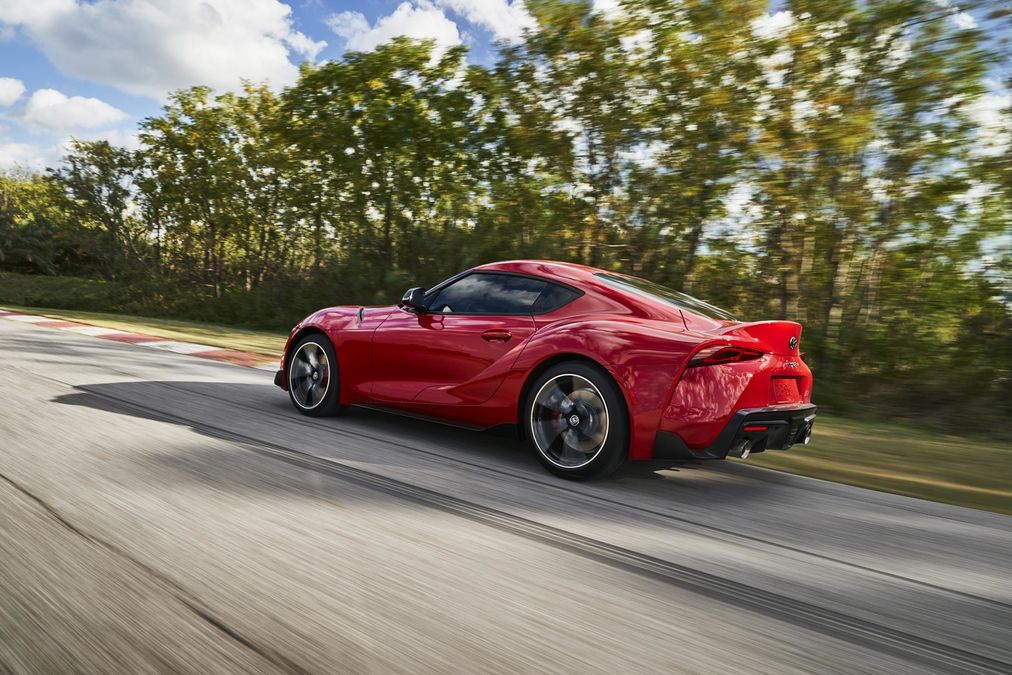The iconic Toyota Supra returns, complete with German genes

Sometimes, good things happen when carmakers get along.
Case in point: Toyota’s new Supra. Made in collaboration with BMW to resurrect a line of cult sports cars churned out by the Japanese brand from 1978 to 2002, the coupe shares the same platform as the German carmaker’s Z4.
It’s a bold new experiment between the companies that, so far, appears to be paying off.
So I hopped on a Shinkansen bullet train from Tokyo for a quick trip to Izu to take the new Supra for a spin through the peninsula’s breezy mountains and hot-spring-filled valleys.
The front-engine, rear-wheel-drive Supra comes with the choice of three turbocharged powerplants. The two-litre, four-cylinder comes as a base 197-horsepower (147kW) and a 258hp (192kW) tuned version.
But the one most drivers will probably go for is the three-litre, six-cylinder, pushing out 340hp (253kW). Inline-six engines are deeply entwined in the Supra’s DNA, going all the way back to the first iteration four decades ago. Back then, it debuted as essentially an elongated Toyota Celica, with a longer hood and front panels to accommodate the engine.
That aircraft carrier-deck of a nose became a key element of the Supra’s appeal over the years. Although the fifth generation is the curviest iteration yet, Toyota made sure to retain the look. Even without a badge, you know it’s a Supra.
No wonder then, that Toyota engineers looked at BMW’s mostly-hood-with-a-cab-attached Z-series coupes and saw similar genes.
Weighing 1420 to 1520 kilograms, the new Supra handled corners well and was always ready to vault itself from a standing stop.
At the same time, the new Supra felt utterly controllable, more so than a Nissan GT-R. And unsurprisingly, it reminded me of a BMW Z3.
In fact, the Supra’s closest rival might be the Porsche Cayman—just the right engine and size to be fun, without the stress of worrying the car might toss you over a cliff, thanks to a perfect 50-50 weight distribution.
In terms of competition, the Supra occupies an interesting niche. While it’s affordably priced compared with a Porsche, BMW or Audi, the Toyota sports coupe may also tempt Mazda MX-5 buyers.
The latest generation of the MX-5, the best-selling two-seater in history, is smaller and offers less power—but it’s light and quick with the same weight balance, and costs much less. It will be intriguing to see how this plays out in the marketplace.
The eight-speed transmission was smooth, with near-seamless transitions between manual and auto modes on the paddle shifters.
The gearbox is part of BMW’s ZF 8HP series, a well-regarded piece of machinery with shifting that’s known for being rapid enough for sports cars and smooth enough for luxury sedans.
In a tragic decision for those who’ll want to take the car drifting, fully manual transmission isn’t available.
Getting into the new Supra isn’t as easy as it used to be. The car is much lower to the ground, and the doors are smaller. In that respect, the car has completely shed its roots and is much more like a European roadster.
The lack of rear seats is another reminder. While the Z4 is a convertible, the Supra is a hard-top. Toyota wouldn’t say whether there might a convertible Supra in the future.
The body bulges and flows, but it’s not an in-your-face forced look, like cousin Lexus’s spindle grille. The Supra’s headlights and taillights retain some of the prior version’s design cues, such as its curvy rump.
Toyota’s designers said they took some of their inspiration from the Toyota 2000GT, the legendary sports car that was in the 1967 James Bond movie You Only Live Twice.
Inside, there are no unnecessary frills, and some no-nonsense buttons might have come straight out of a Prius. The displays and dials are in just the right places, almost boringly so.
The seats are meant to be comfortable, while the steering wheel is a solid, built-by-Toyota piece of equipment without many frills.
Given the cult-like status the Supra enjoys in street-racing circles, and the fact that the last version went out of production in 2002, Toyota took a huge gamble by teaming up with another automaker to bring it back.
At the same time, it may be easy to view the partnership with BMW as a hedge when electric cars and self-driving vehicles seem to be laying claim to development budgets.
Although consumers’ tastes are shifting, the Supra seems determined to bring them along for a ride to a future that’s at least a little bit gas-powered.





Hi Guest, join in the discussion on The iconic Toyota Supra returns, complete with German genes